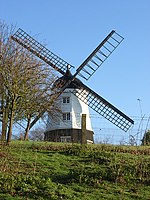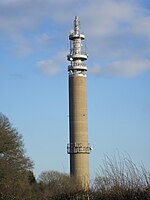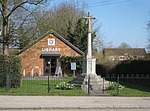Wormsley Chalk Banks

Wormsley Chalk Banks are six separate areas which together are a 14.1-hectare (35-acre) biological Site of Special Scientific Interest near Turville in Buckinghamshire and Oxfordshire. The site is in the Chilterns Area of Outstanding Natural Beauty.The site has chalk grassland which is rich in both plant and invertebrate species which have sharply declined nationally. The areas vary, with the dominant grass being sheep's fescue in some, which have the greatest variety of plants, while others with deeper soils have coarser grasses such as upright brome and tall oat-grass. Flowers include bee and fly orchids, the latter of which have become more scarce. Invertebrates include a variety of butterflies, harvest spiders and slow-worms.Public footpaths cross several of the areas.
Excerpt from the Wikipedia article Wormsley Chalk Banks (License: CC BY-SA 3.0, Authors, Images).Wormsley Chalk Banks
Geographical coordinates (GPS) Address Website Nearby Places Show on map
Geographical coordinates (GPS)
| Latitude | Longitude |
|---|---|
| N 51.638 ° | E -0.924 ° |
Address
Stokenchurch
England, United Kingdom
Open on Google Maps










